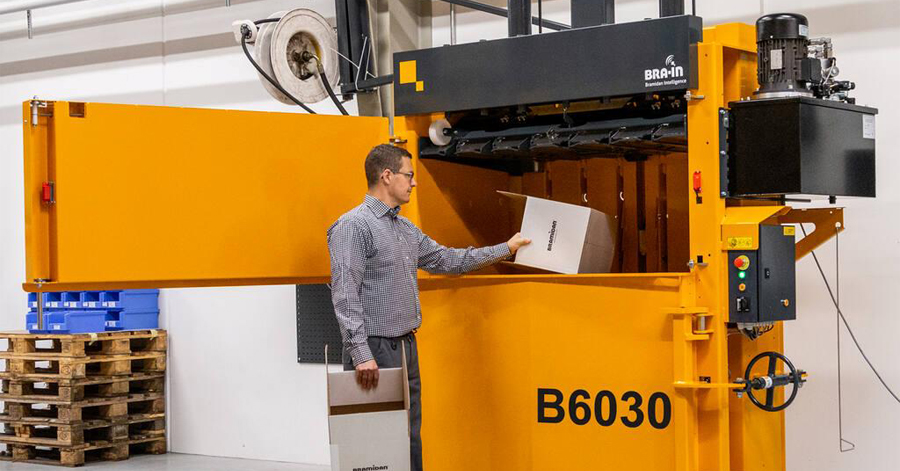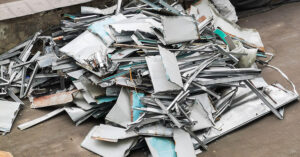Vertical balers are indispensable tools in the recycling and waste management industry. They compress recyclable materials like cardboard, plastic, and textiles into compact, manageable bales, making transportation and storage more efficient.
However, like any mechanical equipment, vertical balers require regular maintenance to ensure optimal performance and extend their lifespan.
This article will guide you through the key steps of vertical baler maintenance, helping you maintain your equipment’s efficiency and safety.
Understanding Vertical Balers
A vertical baler operates by using a hydraulic press to compress materials within a chamber. The key components of a vertical baler include the hydraulic system, the chamber where materials are loaded, and the platen that presses down to compact the materials.
Regular maintenance of these components is crucial to ensure the baler operates smoothly and efficiently.
Importance of Regular Maintenance
Regular maintenance of your vertical baler is essential for several reasons. Firstly, it ensures the machine operates at peak efficiency, saving time and energy. Secondly, it prevents minor issues from escalating into major breakdowns, which can be costly to repair and result in downtime.
Additionally, maintaining your baler is important for safety compliance and can help prevent workplace accidents.
Pre-Maintenance Checklist
Before performing any maintenance tasks, it’s important to prioritize safety. Ensure the baler is turned off and properly locked out to prevent accidental operation.
Gather all necessary tools and materials for the maintenance tasks, and inspect the area around the baler for any potential hazards.
Key Maintenance Steps
Daily Maintenance
- Visual Inspection: Check for any signs of leaks, wear, or damage to the baler’s components.
- Hydraulic Fluid Levels: Ensure the hydraulic fluid is at the correct level and check for any signs of contamination.
- Debris Clearance: Remove any debris from the chamber and surrounding area to prevent jams and ensure smooth operation.
Weekly Maintenance
- Lubrication: Apply lubricant to moving parts and pivot points to reduce friction and wear.
- Hydraulic Hoses and Fittings: Inspect for signs of wear or damage and replace if necessary.
- Electrical Connections: Check that all controls and connections are functioning properly.
Monthly Maintenance
- Bolts and Fasteners: Tighten any loose bolts and fasteners to maintain the structural integrity of the baler.
- Safety Mechanisms: Test the emergency stop features and other safety mechanisms to ensure they are working correctly.
Semi-Annual Maintenance
- Hydraulic Fluid and Filters: Change the hydraulic fluid and filters if needed to ensure the system operates efficiently.
Annual Maintenance
- Professional Inspection: Have a certified technician inspect and service the baler to ensure it is in optimal condition.
- Hydraulic Pressure Settings: Calibrate the hydraulic pressure settings to ensure efficient operation.
- Comprehensive Cleaning: Thoroughly clean the machine and its components to prevent buildup and ensure smooth operation.
Troubleshooting Common Issues
Even with regular maintenance, you may encounter some common issues with your vertical baler. Baler jams, hydraulic leaks, and control malfunctions are some of the problems that can arise.
It’s important to address these issues promptly and seek professional help if necessary to prevent further damage and ensure the safety of the operation.
Record Keeping and Documentation
Maintaining a detailed log of all maintenance activities is crucial for effective vertical baler maintenance. This record should include dates of maintenance, parts replaced, and any repairs or adjustments made.
Keeping track of this information can help you identify patterns or recurring issues and ensure that your baler receives the necessary care.
Conclusion
Regular maintenance is key to ensuring the optimal performance and longevity of your vertical baler. By following the steps outlined in this guide, you can maintain your equipment’s efficiency, prevent costly breakdowns, and ensure a safe working environment.
Establishing a routine maintenance schedule and keeping detailed records will help you manage your vertical baler’s upkeep effectively.
Contact Nanoia Recycling Equipment for Custom Solutions
At Nanoia Recycling Equipment, we understand the importance of maintaining your recycling equipment for optimal performance. Our team of experts is here to provide comprehensive solutions, from design and fabrication to delivery, installation, finance, and repair.
Our main products include balers, compactors, and crushers, tailored to meet your specific needs.
If you’re looking for professional maintenance services or custom solutions for your vertical baler or other recycling equipment, contact us today for a personalized approach to your recycling needs.






